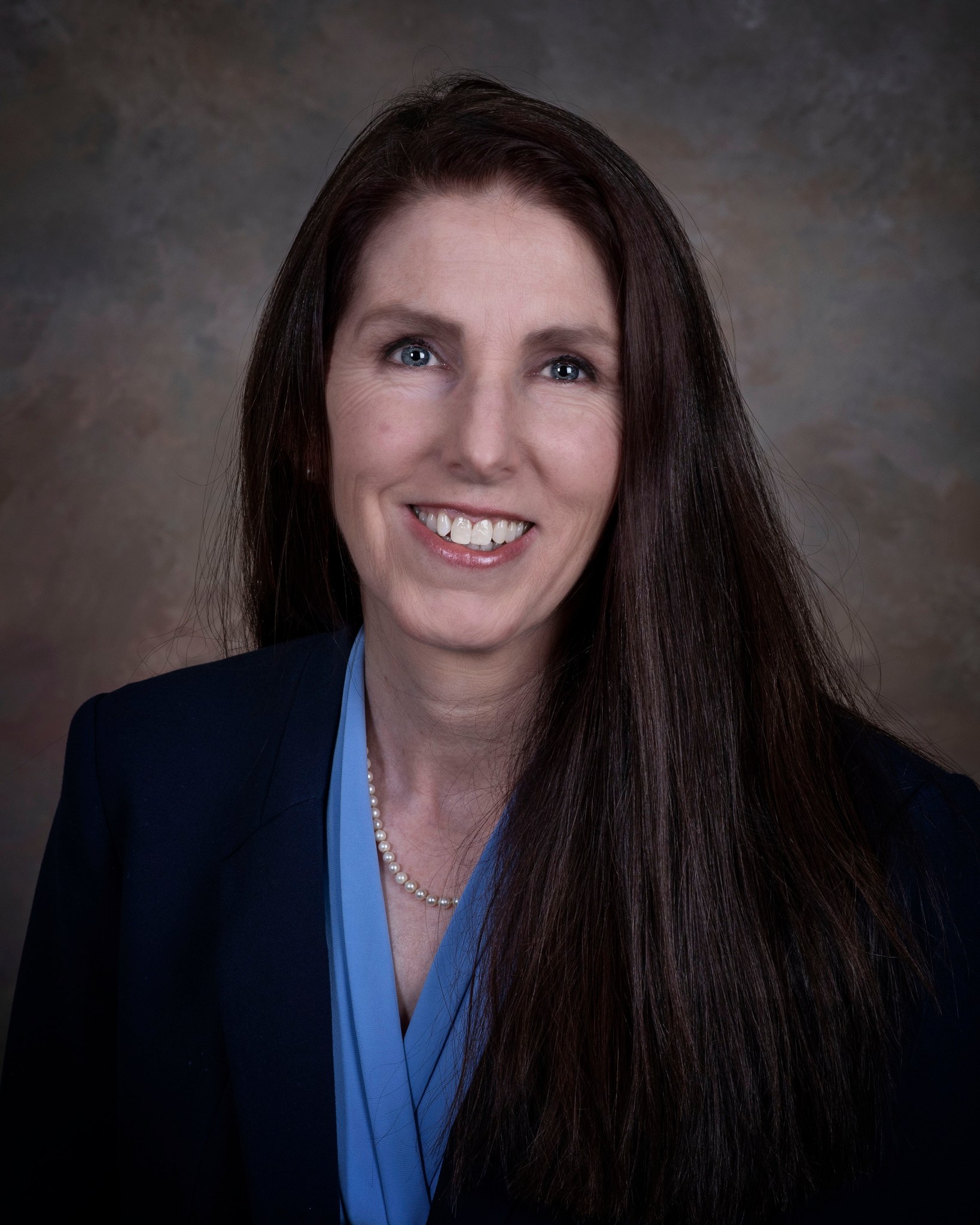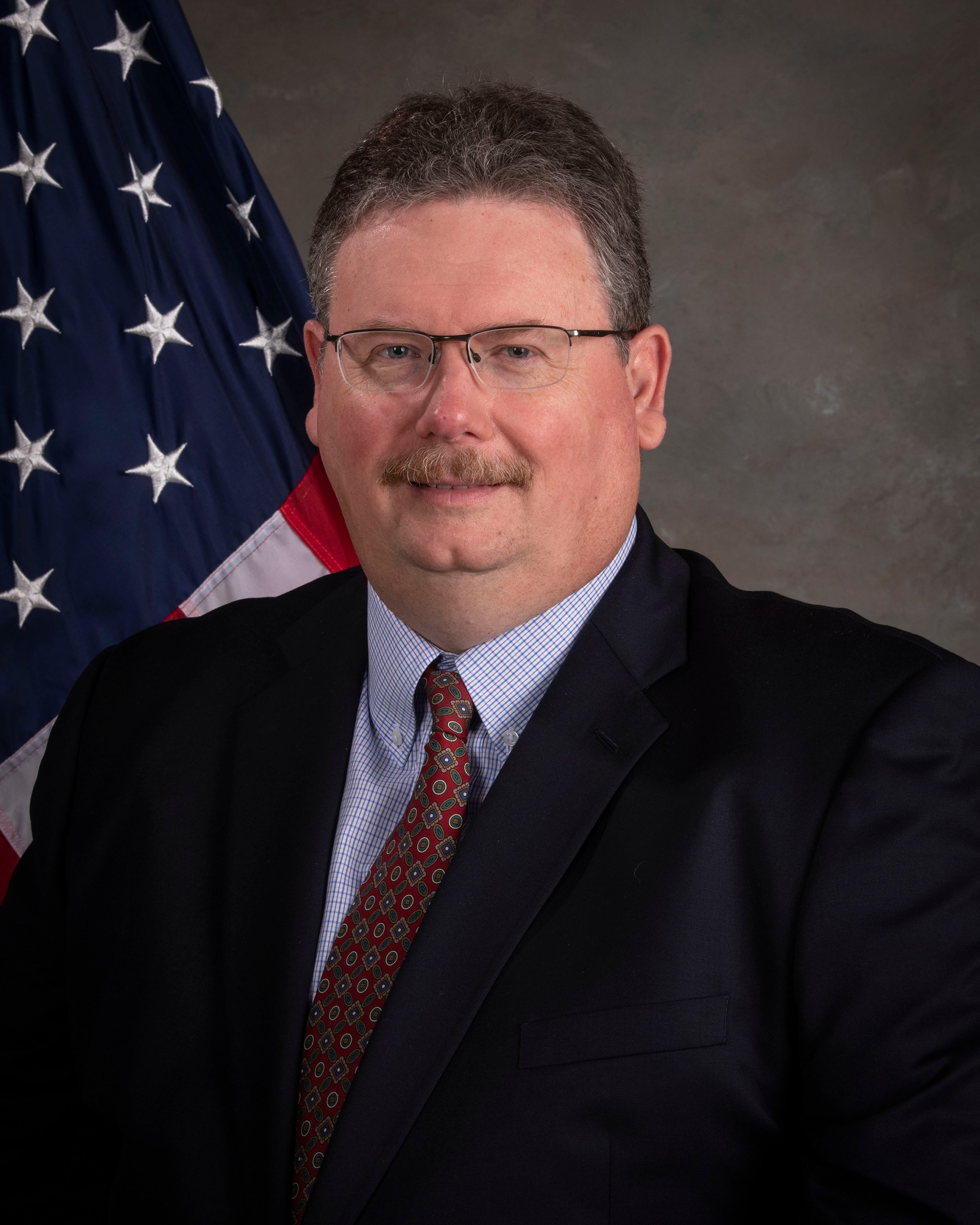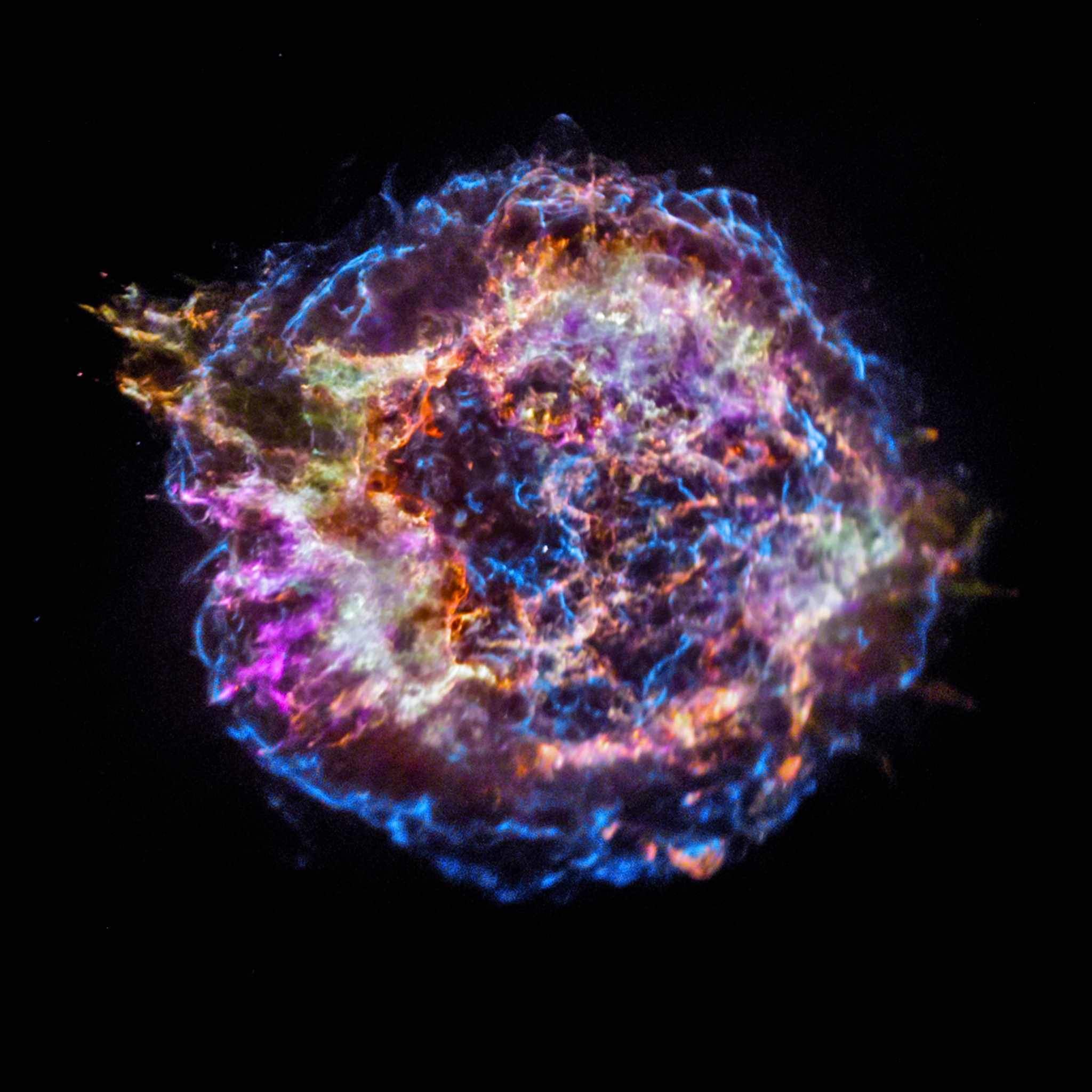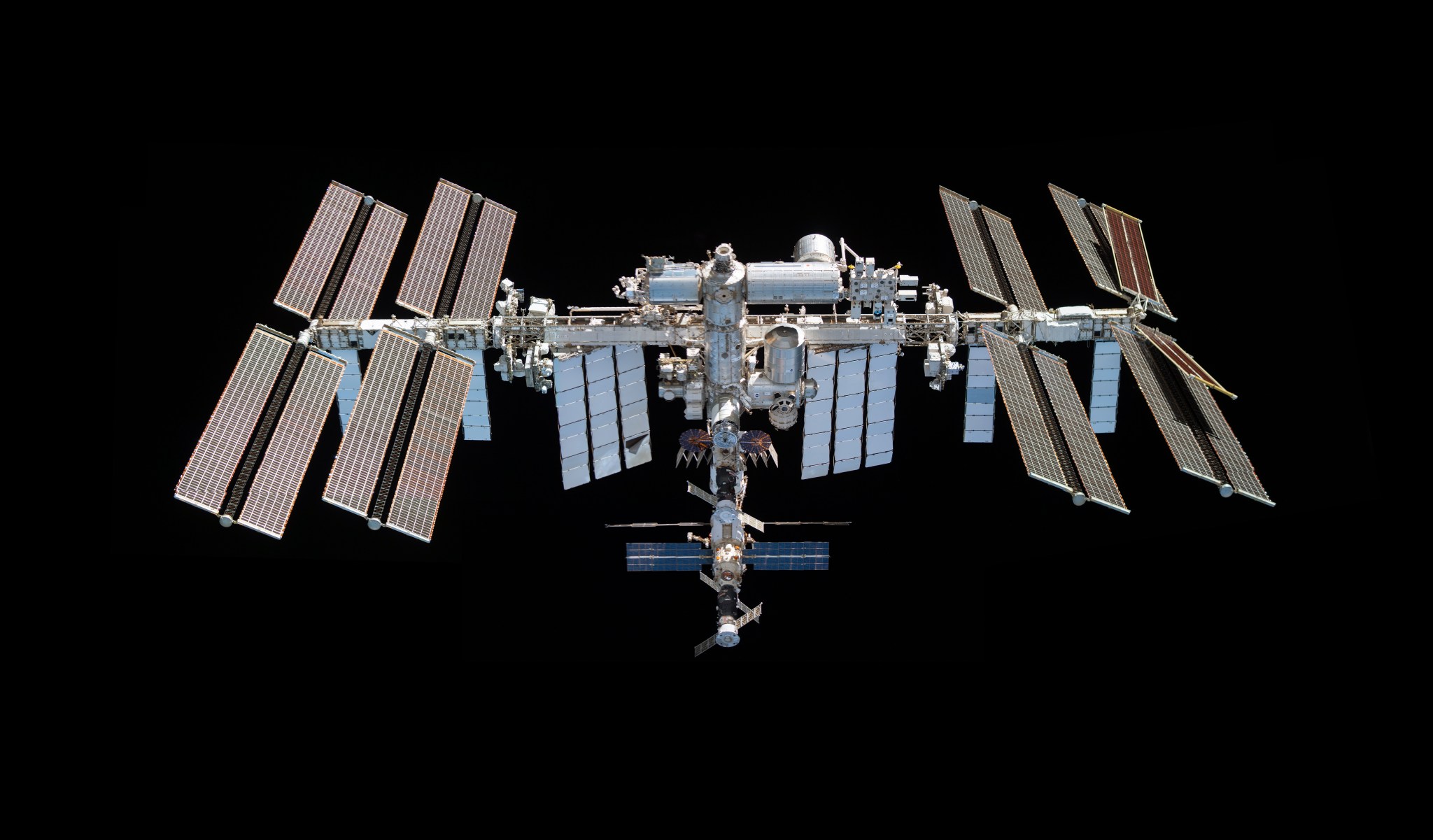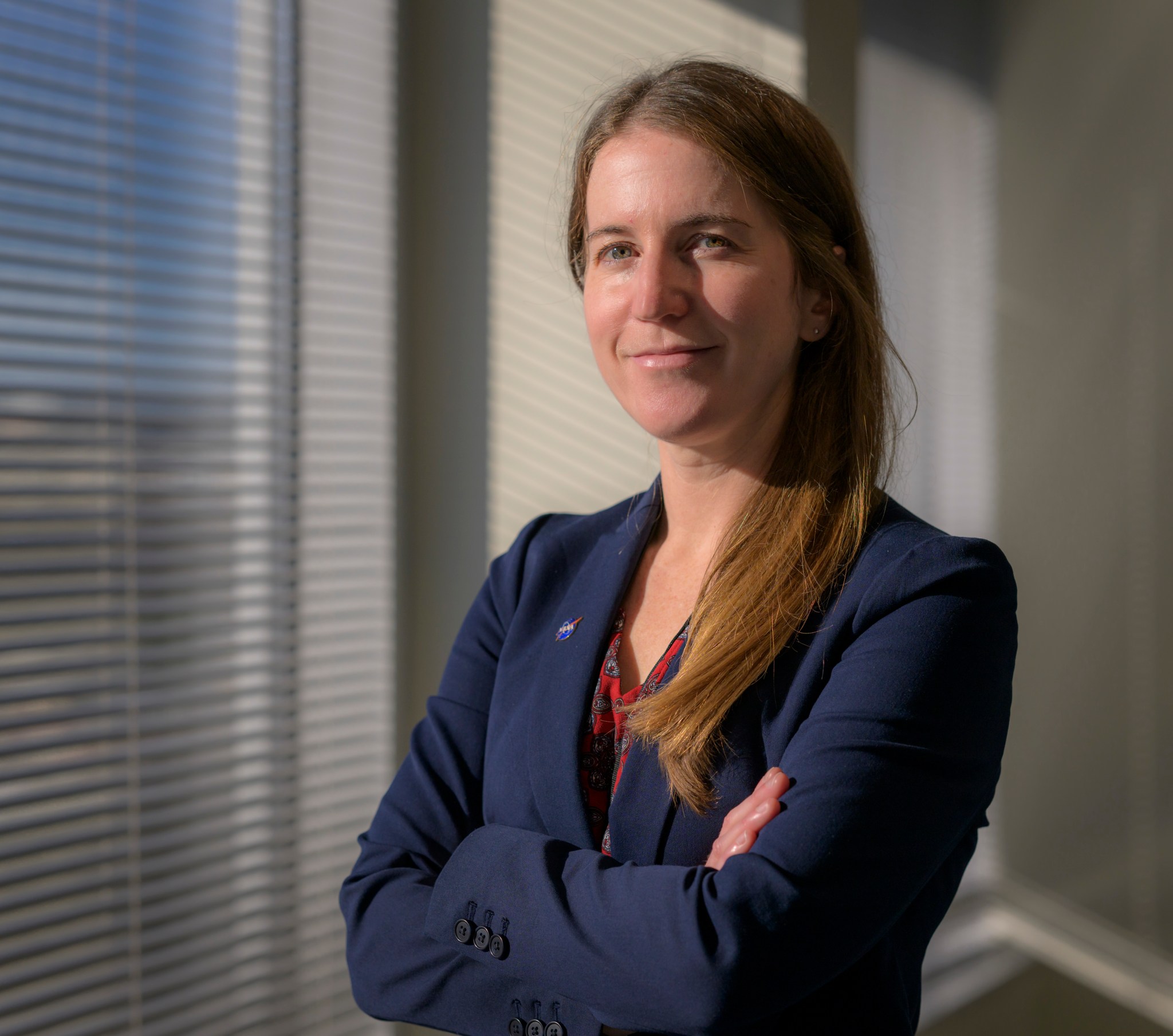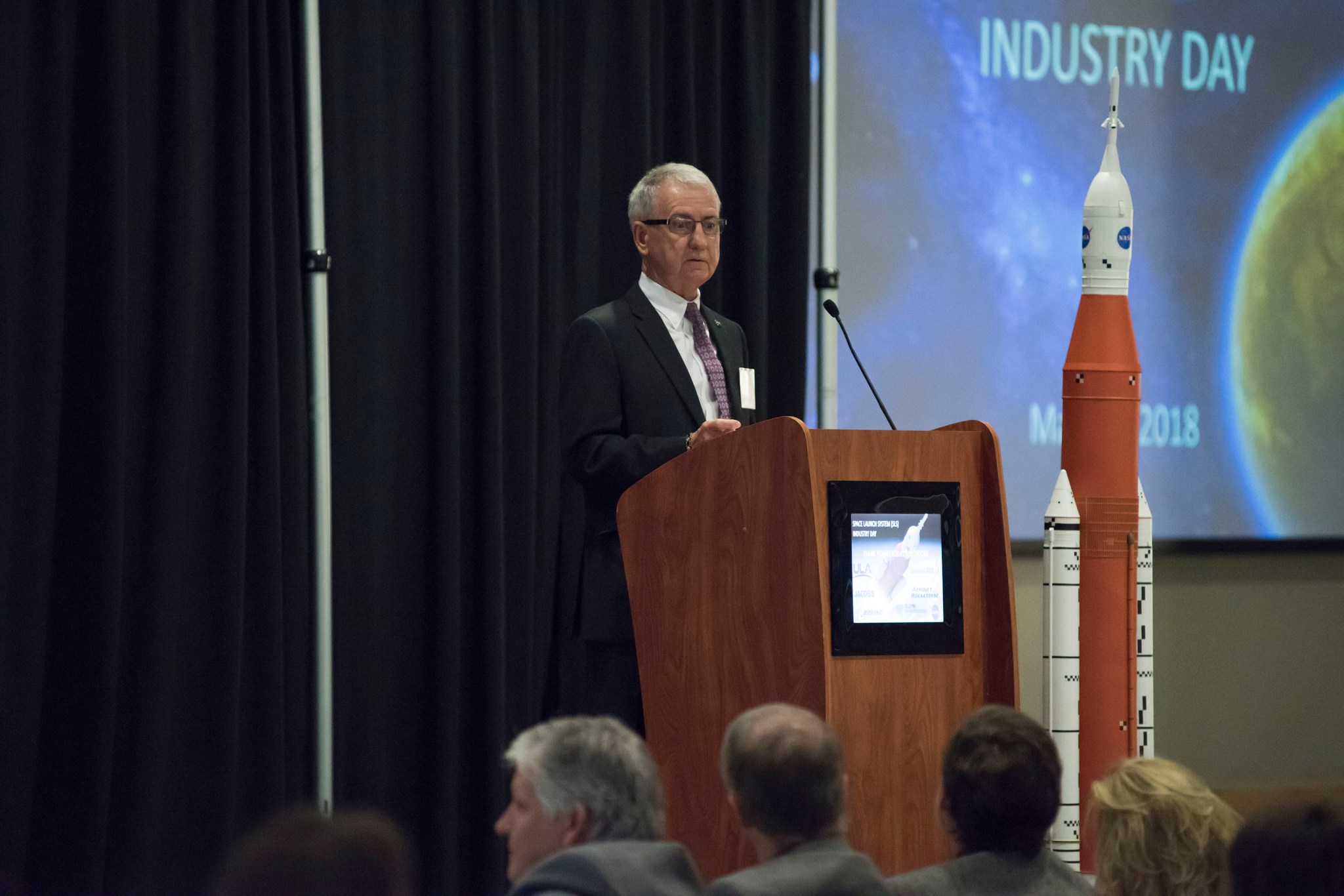Rae Ann Meyer Named Marshall’s Associate Director
Rae Ann Meyer has been named associate director of NASA’s Marshall Space Flight Center.
Meyer will lead development of the center’s business operations, guide daily business decisions, and oversee center operational policy and processes. In addition, she will be a senior adviser in advancing the direction of the center’s future.
Meyer will help manage the center’s 7,000 on- and near-site civil service and contract employees and help oversee an annual budget of approximately $3.6 billion. Meyer will provide executive leadership across Marshall’s mission support areas as well as the center’s diverse portfolio of human spaceflight, science, and technology efforts, which touch nearly every mission NASA pursues.
“With more than two decades of government operations and management experience, Rae Ann is well prepared for her new position on the center’s leadership team,” Marshall Director Jody Singer said. “The leadership skills she has displayed while working with Marshall’s Science and Technology Office and other NASA programs has been, and will continue to be, invaluable to Marshall and the nation’s space exploration efforts.”
The Chattanooga, Tennessee, native most recently served as deputy manager of Marshall’s Science and Technology Office. Named to the Senior Executive Service position in May 2019, she assisted in leading the organization responsible for planning, developing, and executing a broad range of science and technology investigations, programs, projects, and activities in support of NASA’s science, technology, and exploration goals. Meyer helped oversee an annual budget of more than $475 million and managed a diverse, highly technical workforce of approximately 300 civil service and contractor employees.
The Senior Executive Service is the personnel system covering top managerial positions in federal agencies.
Among Meyer’s other roles over the years, she was manager of Marshall’s Science and Technology Partnerships and Formulation Office from 2017 to 2019, worked a detail as technical adviser in 2016 for the Office of Strategy and Plans at NASA Headquarters, and was chief of key Engineering Directorate structure and flight analysis divisions at Marshall from 2007 to 2017.
Meyer was manager of the Constellation Support Office from 2006 to 2007 – roles supporting launch vehicle development that would inform and directly contribute to NASA’s Space Launch System, its next flagship rocket to the Moon and Mars. She led Marshall’s In-Space Propulsion Technology Office from 2004 to 2006 and was assistant manager of the Space Transfer Technology Project from 2000 to 2002, managing in-space technology program funding at NASA centers nationwide.
Meyer began her NASA career in 1989 as a control mechanisms engineer in Marshall’s Propulsion Laboratory.
Among her achievements and awards, Meyer received a NASA Silver Achievement Medal in 2019; the NASA Outstanding Leadership Medal in 2012 for leading development of strategies for pursuing new program/project opportunities; a NASA Certificate of Appreciation in 2001 for leading formulation efforts to augment in-space propulsion technology budgets across NASA; and Marshall Director’s Commendations in 2004 and 2009, honoring her work on advanced technology development efforts supporting future science missions and major product development for the Ares Project Preliminary Design Review, respectively.
Meyer earned a bachelor’s degree in electrical engineering from the University of Tennessee in Knoxville in 1989. Meyer, her husband, David, also a Marshall employee, and their children reside in Madison.
Tony Lee Clark Named Deputy Director of Marshall’s Space Systems Department
Tony Lee Clark has been named deputy director of the Space Systems Department at NASA’s Marshall Space Flight Center.
Clark will help lead the design, development, testing, and delivery of flight, ground, prototype, and development products for NASA human spaceflight programs, science investigations, and exploration initiatives. He will aid in the oversight of an annual budget of approximately $70 million and help manage a diverse, highly technical workforce of approximately 660 civil service employees and contractors.
Previously, he was manager of the vehicle equipment area of Johnson Space Center’s Vehicle Systems Integration Office of the Gateway Program – NASA’s ambitious lunar outpost intended to support long-term human missions to the Moon’s surface and provide a staging point for deep space exploration – from 2018 until 2021. Clark led vehicle equipment budget activities and evaluation of proposals for new Gateway projects. He also was the primary interface with the Canadian Space Agency for the development and delivery of common equipment and with the European Space Agency for the exchange of hardware and software plans and schedules.
Over his three decades at NASA, Clark has held numerous leadership roles, bringing a wealth of technical and supervisory experience to Marshall engineering endeavors. He was manager of the Engineering Resource Management Office in Marshall’s Engineering Directorate from 2014 to 2018, tasked with leading and coordinating resources among eight engineering departments, laboratories, and offices staffed by more than 2,300 civil service and contract personnel.
In 2014, he also was acting deputy manager of the Engineering Directorate’s Spacecraft & Vehicle Systems Department. From 2007 to 2014, he was chief of the directorate’s Electrical Integration and Fabrication Division, and from 2004 to 2007 was chief of the Electromagnetic Environmental Effect and Electrical Integration Branch. He joined Marshall in 1991 as an electromagnetic environmental effects engineer.
Clark received a bachelor’s degree in electrical engineering from Tennessee Technological University in Cookeville in 1989 and earned a master’s degree in electrical engineering from Ohio State University in Columbus in 1991.
Among his many professional honors, Clark received the NASA Exceptional Achievement Medal in 2010 for his work on the Ares IX, the launch vehicle which informed development of NASA’s new rocket, the Space Launch System. He also received a Silver Snoopy award in 1999, presented by NASA’s astronaut corps for outstanding service reflecting the highest dedication to safe human spaceflight.
Clark was a founding member in 2004 of the Huntsville Chapter of the Institute of Electrical and Electronic Engineers’ Electromagnetic Compatibility Society. He lives in Huntsville with his wife Jeanie. They have one child.
NASA’s New IXPE Mission Begins Science Operations
NASA’s newest X-ray eyes are open and ready for discovery.
Having spent just over a month in space, the Imaging X-ray Polarimetry Explorer (IXPE) is working and already zeroing in on some of the hottest, most energetic objects in the universe.
A joint effort between NASA and the Italian Space Agency, IXPE is the first space observatory dedicated to studying the polarization of X-rays coming from objects like exploded stars and black holes. Polarization describes how the X-ray light is oriented as it travels through space.
“The start of IXPE’s science observations marks a new chapter for X-ray astronomy,” said Martin Weisskopf, the mission’s principal investigator at NASA’s Marshall Space Flight Center. “One thing is certain: We can expect the unexpected.”
IXPE launched Dec. 9, 2021, on a Falcon 9 rocket into orbit 370 miles above Earth’s equator. The observatory’s boom, which provides the distance needed to focus X-rays onto its detectors, was deployed successfully Dec. 15. The IXPE team spent the next three weeks checking out the observatory’s maneuvering and pointing abilities and aligning the telescopes.
Over the course of these tests, the team pointed IXPE at two bright calibration targets: 1ES 1959+650, a black hole-powered galaxy core with jets shooting into space; and SMC X-1, a spinning dead star, or pulsar. The brightness of these two sources made it easy for the IXPE team see where X-rays are falling on IXPE’s polarization-sensitive detectors and make small adjustments to the telescopes’ alignment.
On Jan. 11, IXPE began observing its first official scientific target – Cassiopeia A, or Cas A – the remains of a massive star that blew itself apart in a supernova around 350 years ago in the Milky Way galaxy. Supernovae are filled with magnetic energy and accelerate particles to near light-speed, making them laboratories for studying extreme physics in space.
IXPE will provide details about Cas A’s magnetic field structure that can’t be observed in other ways. By studying the X-ray polarization, scientists can work out the detailed structure of its magnetic field and the sites where these particles pick up speed.
IXPE’s observations of Cas A will last about three weeks.
“Measuring X-ray polarization is not easy,” Weisskopf said. “You have to collect a lot of light, and the unpolarized light acts like background noise. It can take a while to detect a polarized signal.”
IXPE transmits scientific data several times a day to a ground station operated by the Italian Space Agency in Malindi, Kenya. The data flows from the Malindi station to IXPE’s Mission Operations Center at the University of Colorado Boulder’s Laboratory for Atmospheric and Space Physics and then to IXPE’s Science Operations Center at Marshall for processing and analysis. IXPE’s scientific data will be publicly available from the High Energy Astrophysics Science Research Center at NASA’s Goddard Space Flight Center.
The Marshall science operations team also coordinates with the mission operations team at the Laboratory for Atmospheric and Space Physics to schedule science observations. The mission plans to observe more than 30 planned targets during its first year. The mission will study distant supermassive black holes with energetic particle jets that light up their host galaxies. IXPE will also probe the twisted space-time around stellar-mass black holes and measure their spin. Other planned targets include different types of neutron stars, such as pulsars and magnetars. The science team has also reserved about a month to observe other interesting objects that may appear in the sky or brighten unexpectedly.
IXPE has partners and science collaborators in 12 countries. Ball Aerospace, headquartered in Broomfield, Colorado, manages spacecraft operations.
Biden-Harris Administration Extends Space Station Operations Through 2030
NASA Administrator Bill Nelson announced Dec. 31, 2021, the Biden-Harris Administration’s commitment to extend International Space Station operations through 2030, and to work with the agency’s international partners in Europe (European Space Agency), Japan (Japan Aerospace Exploration Agency), Canada (Canadian Space Agency), and Russia (State Space Corporation Roscosmos) to enable the continuation of groundbreaking research being conducted in the unique orbiting laboratory through the rest of this decade.
“The International Space Station is a beacon of peaceful international scientific collaboration, and for more than 20 years has returned enormous scientific, educational, and technological developments to benefit humanity,” Nelson said. “I’m pleased that the Biden-Harris Administration has committed to continuing station operations through 2030.
“The United States’ continued participation on the ISS will enhance innovation and competitiveness, as well as advance the research and technology necessary to send the first woman and first person of color to the Moon under NASA’s Artemis program and pave the way for sending the first humans to Mars.”
Over the past two decades, the U.S. has maintained a continuous human presence in orbit around the Earth to test technologies, conduct scientific research, and develop skills needed to explore farther than ever before. The unique microgravity laboratory has hosted more than 3,000 research investigations from over 4,200 researchers across the world. Nearly 110 countries and areas have participated in activities aboard the station, including more than 1.5 million students per year in science, technology, engineering, and mathematics activities.
Instruments aboard the space station, used in concert with free-flying instruments in other orbits, help NASA measure the stresses of drought and the health of forests to enable improved understanding of the interaction of carbon and climate at different time scales. Operating these and other climate-related instruments through the end of the decade will greatly increase understanding of the climate cycle.
NASA’s Marshall Space Flight Center supports the station by operating the Payload Operations Integration Center, which operates, plans, and coordinates the science experiments aboard 365 days a year, 24 hours a day.
“It’s a great time for the agency and our center,” said Joseph Pelfrey, manager of the Human Exploration Development & Operations Office at Marshall. “We will achieve 21 years in March of doing continuous operations in Huntsville from the POIC.”
Extending operations through 2030 will continue another productive decade of research advancement and enable a seamless transition of capabilities in low-Earth orbit to one or more commercially owned and operated destinations in the late 2020s. The decision to extend operations and NASA’s recent awards to develop commercial space stations together ensure uninterrupted, continuous human presence and capabilities; both are critical facets of NASA’s International Space Station transition plan.
NASA Announces New Chief Scientist, Senior Climate Advisor
NASA Administrator Bill Nelson announced that Dr. Katherine Calvin will serve the agency in dual roles as chief scientist and senior climate advisor effective Jan. 10.
Calvin succeeds Jim Green, who retired from his role Jan. 1 as chief scientist after more than 40 years with NASA, and Gavin Schmidt, who was senior climate advisor in an acting capacity since the position was created in February 2021. NASA established the senior climate advisor position to ensure effective fulfillment of the Biden-Harris Administration’s climate science objectives for the agency. Schmidt will maintain his role as director of NASA’s Goddard Institute for Space Studies in New York.
“I’m thrilled to welcome Kate to the NASA family, where she will bring her expertise in integrated human-Earth system modeling to help ensure the Biden Administration has the data needed to achieve the critical goal of protecting our planet.” Nelson said. “I also want to thank Jim and Gavin for their invaluable leadership to NASA and the world as chief scientist and senior climate advisor.”
Calvin will be principal advisor to the administrator and other agency leaders on NASA science programs, strategic planning, and policy. She will also represent the agency’s strategic science objectives and contributions to the national and international science communities.
“Climate change is one of the biggest challenges facing our nation – and our planet,” Calvin said. “NASA is a world leader in climate and Earth science. I’m excited to be a part of the team that is helping to advance this important science mission.”
Previously, Calvin was an Earth scientist at the Pacific Northwest National Laboratory’s Joint Global Change Research Institute in College Park, Maryland. She worked on the institute’s Global Change Analysis Model, a system for exploring and analyzing the relationships between human and Earth systems, and the Department of Energy’s Energy Exascale Earth System Model, a system for analyzing the Earth system.
Calvin holds master’s and doctoral degrees in management, science, and engineering from Stanford University in Palo Alto, California, and a bachelor’s degree in computer science and mathematics from the University of Maryland in College Park.
In February 2021, NASA joined the National Climate Task Force established by President Joe Biden, which encourages a governmentwide approach to address climate change. NASA has issued a climate action plan aimed at continuing critical Earth science and climate research and averting mission impacts due to climate. With more than two dozen satellites and instruments observing key climate indicators, NASA is the premier agency in observing and understanding changes to Earth.
Astronomers Spy Quartet of Cavities from Giant Black Holes
Scientists have found four enormous cavities, or bubbles, at the center of a galaxy cluster using NASA’s Chandra X-ray Observatory. This unusual set of features may have been caused by eruptions from two supermassive black holes closely orbiting each other.
Galaxy clusters are the largest structures in the universe held together by gravity. They are a mixture of hundreds or even thousands of individual galaxies, enormous amounts of hot gas, and unseen dark matter. The hot gas that pervades clusters contains much more mass than the galaxies themselves, and glows brightly in X-ray light that Chandra detects. An enormous galaxy is usually found at the center of a cluster.
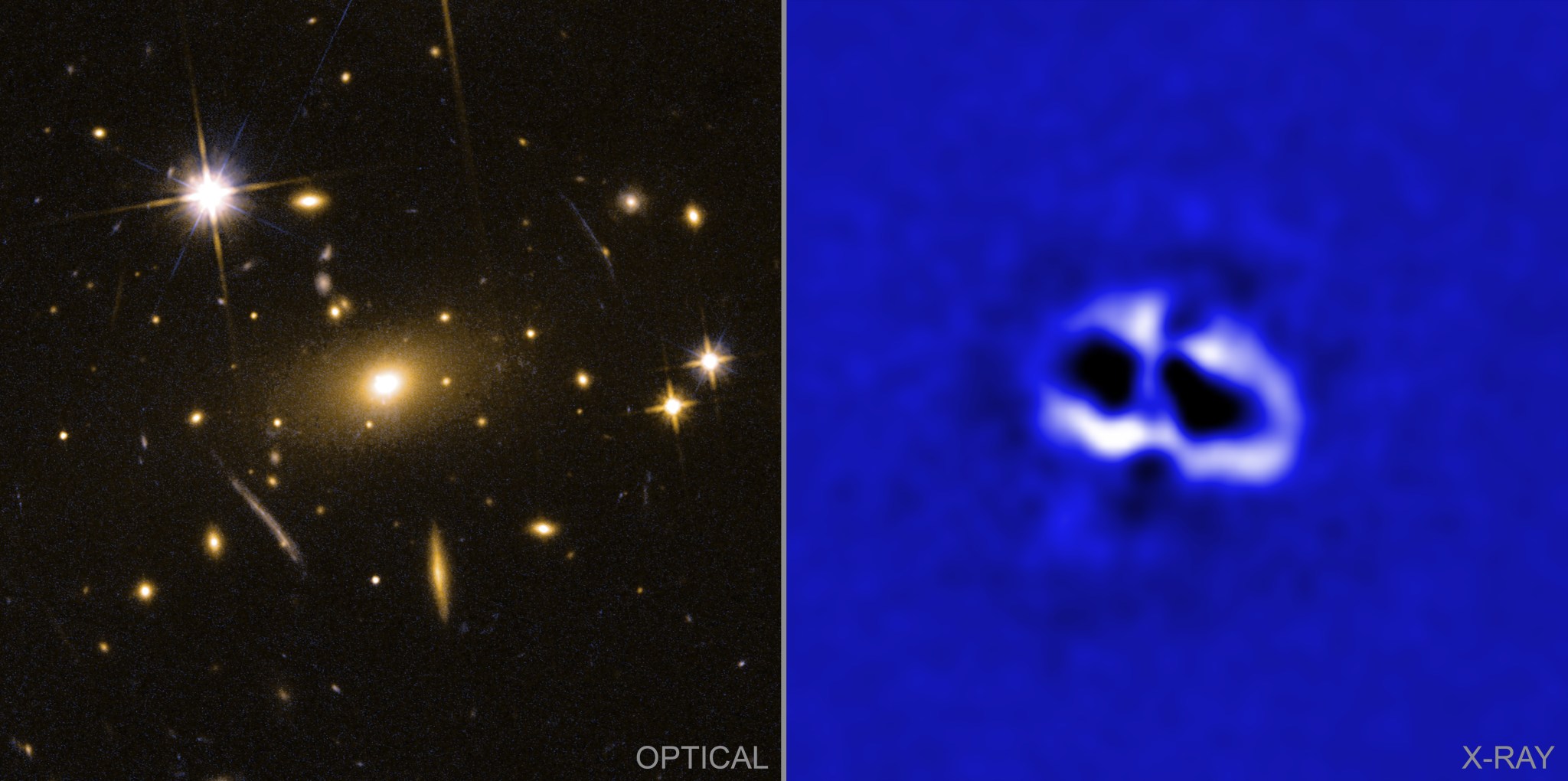
A new Chandra study of the galaxy cluster known as RBS 797, located about 3.9 billion light-years from Earth, uncovered two separate pairs of cavities extending away from the center of the cluster.
These types of cavities have been seen before in other galaxy clusters. Scientists think they are the result of eruptions from regions near a supermassive black hole in the middle of the massive central galaxy. As matter flies away from the black hole as jets in opposing directions, it blows cavities in the hot gas. The revelation in RBS 797 is that there are two sets of jets directed perpendicular to each other.
“We think we know what a pair of cavities represents, but what is going on when a galaxy cluster has two pairs in very different directions?” said Francesco Ubertosi of the University of Bologna in Italy, who led the Chandra study.
Astronomers previously observed the pair of cavities in the east-west direction in RBS 797, but the pair in the north-south direction was only detected in a new, much longer Chandra observation. The deeper image uses almost five days of Chandra observing time, compared to about 14 hours for the original observation. The National Science Foundation’s Karl G. Jansky Very Large Array had already observed evidence for two pairs of jets as radio emission, which line up with the cavities.
How was this quartet of cavities created? The most likely answer, according to Ubertosi and his colleagues, is that RBS 797 contains a pair of supermassive black holes that have launched jets in perpendicular directions at almost the same time.
“Our best idea is that one pair of supermassive black holes has led to a pair of a pair of cavities,” said Myriam Gitti, a co-author also of the University of Bologna. “While we think supermassive black holes can form binary systems, it is extremely rare that both of them are observed in an active phase – in this sense the discovery of two close active black holes inflating cavities in RBS 797 is extraordinary.”
Indeed, previously a radio observation with the European VLBI Network discovered two radio point sources separated by only about 250 light-years in RBS 797. If both sources are supermassive black holes, they are among the closest pair ever detected. The two black holes should continue to spiral toward each other, generating huge amounts of gravitational waves, and eventually merge.
There is another possible explanation for the four cavities seen in RBS 797. This scenario involves only one supermassive black hole – with jets that somehow manage to flip around in direction quite quickly. Analysis of the Chandra data shows that the age difference for the east-west and north-south cavities is less than 10 million years.
“If there is only one black hole responsible for these four cavities, then we will have to trace the history of its activity,” said Fabrizio Brighenti, a University of Bologna co-author. “Key aspects are how the jets’ orientation changed quickly, and whether this is related to the galaxy cluster environment or to the physics of the black hole itself – or even a combination of both.”
A paper describing these results appears in The Astrophysical Journal Letters and is available here.
NASA’s Marshall Space Flight Center manages the Chandra program. The Smithsonian Astrophysical Observatory’s Chandra X-ray Center controls science from Cambridge, Massachusetts, and flight operations from Burlington, Massachusetts.
Small Businesses, Big Opportunities: Marshall Creates Partnerships to Further Nation’s Mission in Space
By Rick Smith
As NASA forges a new generation of vehicles, rovers, science instruments, test hardware, and support systems to send Artemis explorers to the Moon, fly future crewed missions to Mars, and probe the mysteries of the cosmos, the agency is augmenting the efforts of its experienced government workforce with innovative ideas and cutting-edge capabilities among large and small businesses nationwide.
For David Brock, small business specialist at NASA’s Marshall Space Flight Center, and Todd Pospisil, acting director of Marshall’s Office of Procurement, finding and fostering the right mix of industry skills, ingenuity, and resources means addressing a lot of virtual industry gatherings – and shaking a lot of hands.
In a few short weeks last fall, for example, Brock and other Marshall business leaders met virtually with Gulf Coast business leaders; took part in aerospace manufacturing industry events in Michigan and New Hampshire; consulted with engineering executives from Japan; and hosted a two-day virtual information session for minority-serving academic institutions across the country.
Brock – who has spent more than 30 years providing strategic guidance and direction in the planning, coordination, and implementation of NASA Small Business Programs at Marshall – said those interactions are the best part of his job.
“We bring opportunities to industry, connect the dots between large and small companies, and build lasting partnerships that will advance NASA’s mission goals,” he said. “It’s our job to help companies successfully navigate the federal contracting process, and ensure the future of space exploration is in the best possible hands.”
That means pumping more money into contracts than ever before – more than $4 billion in Marshall contract support and services in fiscal year 2021 alone.
“Contractors are force multipliers for the agency. At Marshall, they make up almost two-thirds of the workforce,” Pospisil said. “That shows how much we count on industry to execute NASA’s mission – and NASA’s success record shows just how effective this partnership approach has been.”
The small business team conducts its mission in a variety of hands-on ways: through internal business counseling sessions; by hosting local and regional industry day events; overseeing NASA’s Mentor-Protégé program, which pairs up small businesses with NASA prime contractors; and by visiting – virtually or in person – companies and academic institutions with skills and resources vital to keeping NASA, the aerospace industry, and the American economy thriving.
They further work to create new business opportunities for small companies, including those owned and operated by women, service-disabled veterans, and minorities, and firms operating in historically underserved business zones around the nation. In partnership with NASA’s Office of STEM Engagement, they also work to inspire and recruit new generations of scientists, technologists, engineers, and mathematicians.
The team maintains NASA’s comprehensive Small Business Marketing Guide – which helps companies find their way forward in federal contracting – and contributes to NASA’s online acquisition forecast tool, which alerts interested bidders to new contracts across the agency.
Despite the hindrances of doing business in a pandemic, Brock said Marshall’s Small Business Office was busier than ever in 2021. Typically, the team makes roughly 50 virtual presentations to corporations and supplier groups each year, hosts upward of 60 visits to Marshall by industry representatives, and handles in-house counseling for more than 400 current and potential contract partners. In 2021, Brock confirmed, that last number topped 700.
Those statistics come as no surprise, given Marshall’s track record in small business leadership for the agency. Marshall is a six-time recipient of the NASA Small Business Administrator’s Cup, the annual agency award presented to the field center with the best overall small business program.
Brock and Pospisil credit their teams and contributors across Marshall and NASA for their success in this area – and agree that even more exciting opportunities lie ahead, as NASA readies the first test flight of its Space Launch System and begins developing its planned lunar Gateway, Human Landing System, and associated Moon exploration technologies.
“It’s a great time to pursue work at NASA,” Brock said. Firms interested in seeking contracts with NASA are encouraged to contact his office by phone or email.
Smith, a Manufacturing Technical Solutions employee, supports Marshall’s Office of Strategic Analysis & Communications.
NASA Awards Contracts for Engineering Support, Science Data Systems Support
NASA awarded the Marshall Engineering Technicians and Trades Support III contract to RSi-QuantiTech JV LLC of Huntsville to provide a wide range of engineering technicians and trade skills, as well as professional and management oversight of the technical staff at the agency’s Marshall Space Flight Center and Michoud Assembly Facility.
The performance-based, cost-plus-award-fee contract has a potential mission services value of $76.6 million and a maximum potential indefinite-delivery/indefinite-quantity value of $196.8 million. The contract begins March 1 with a one-year base period, followed by four one-year option periods that may be exercised at NASA’s discretion.
Under the Section 8(a) small business contract, RSi-QuantiTech JV will be responsible for providing on-site engineering technicians and trade skills services to the Engineering Directorate and Facilities Management Office at Marshall, as well as other programs and projects requiring such services at Marshall and Michoud.
NASA awarded the NOVEL Technologies contract to Development Seed (New Rights Group) of Washington to support science data systems at Marshall.
The performance-based, firm-fixed price contract has a potential mission services value of $24.67 million. The contract began Jan. 1 with a nine-month base period, and will be followed by four one-year option periods that may be exercised at NASA’s discretion.
Development Seed will encourage broader use of NASA’s data and will utilize technology and innovation to remove barriers to using complex Earth observation data. Development Seed’s prior experience in developing Earth science imagery applications and its specialized experience with Interagency Implementation and Advance Concepts Team (IMPACT) projects will be instrumental to meet IMPACT’s goals to build partnerships with other federal agencies, the applications community, and other organizations, and to encourage the adoption of NASA’s Earth observation data into their workflows and operational models.
This Year @ NASA: Amazing Things in 2021
Take a look back at NASA’s work in 2021, the agency’s busiest year yet in low-Earth orbit. NASA also made progress preparing for a flight test around the Moon, and had a very active year exploring space, studying Earth, testing technologies for next-generation aircraft, and much more. (NASA)
Webb Deployments, Hubble Longevity Highlighted on ‘This Week at NASA’
The deployment of a pair of components for NASA’s James Webb Telescope and the agency’s Hubble Space Telescope reaching a milestone was featured in “This Week @NASA,” a weekly video program broadcast on NASA-TV and posted online.
On Jan. 4, the Webb team finished deploying Webb’s 70-foot sunshield, which protects the telescope from the light and heat emitted by the Sun, Earth, and Moon. The sunshield provides a level of protection that would be on the order of more than SPF 1 million if it were sunscreen lotion. The next day the team began operations to deploy the Secondary Mirror Support Structure. The secondary mirror plays an important role in reflecting the light from the primary mirror to the science instruments that sit behind the primary mirror. There is another 5 1/2 months of setup activities before Webb will be ready to deliver its first images. Visit there “Where is Webb?” to view an infographic that shows the status of Webb as it makes its way to its final science destination about one million miles from Earth.
The Webb team at NASA’s Marshall Space Flight Center spent more than two decades working on Webb, primarily focusing on development and testing of the mirrors in extreme cold temperatures at which Webb operates.
Hubble rang in the new year by officially passing the one-billion second mark of its remarkable mission in space. Hubble was deployed and began operating on April 25, 1990, more than 31 years or one billion seconds ago. Hubble’s first one billion seconds included five astronaut servicing missions to the telescope, and more than 1.5 million scientific observations and counting.
Marshall was responsible for Hubble’s overall design, development, and construction.
View this and previous episodes at “This Week @NASA” on NASA’s YouTube page.

























